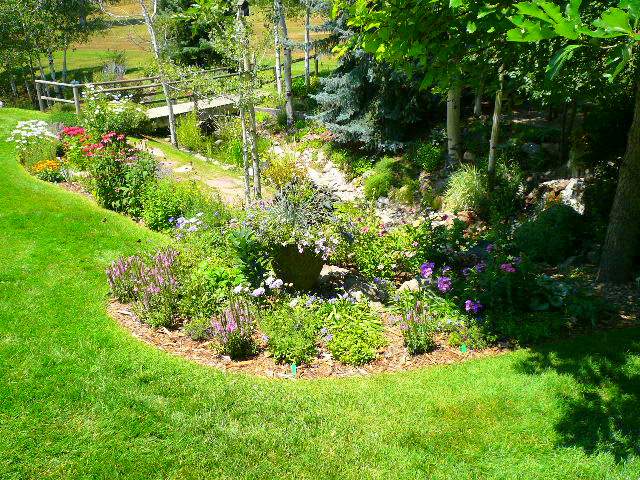In today’s world, where environmental concerns are at the forefront of many people’s minds, sustainable gardening has become more than just a trend – it’s a necessity. This comprehensive guide will walk you through the principles of sustainable gardening, providing practical tips and insights to help you create a beautiful, eco-friendly garden that nurtures both your green thumb and the planet.

Understanding Sustainable Gardening
Sustainable gardening is an approach that seeks to create and maintain gardens in ways that don’t deplete natural resources and don’t harm the environment. It’s about working with nature, not against it. Key principles include:
- Conserving water
- Reducing chemical use
- Promoting biodiversity
- Minimizing waste
- Building healthy soil
- Soil Health: The Foundation of Sustainable Gardening
Healthy soil is the cornerstone of a sustainable garden. Here’s how to nurture your soil:
a) Composting:
- Start a compost bin or pile to recycle kitchen scraps and yard waste
- Use compost to enrich your soil naturally
- Learn about different composting methods: hot composting, vermicomposting, etc.
b) Mulching:
- Apply organic mulch around plants to retain moisture and suppress weeds
- Use materials like leaves, straw, or wood chips
- Replenish mulch annually
c) Avoid Tilling:
- Minimize soil disturbance to protect soil structure and beneficial organisms
- Use no-dig methods when possible
- Water Conservation Techniques
Water is a precious resource. Here’s how to use it wisely:
a) Efficient Irrigation:
- Install drip irrigation or soaker hoses for targeted watering
- Water deeply but less frequently to encourage deep root growth
- Water early in the morning to reduce evaporation
b) Rainwater Harvesting:
- Set up rain barrels to collect rainwater from your roof
- Use collected rainwater for garden irrigation
c) Choose Drought-Tolerant Plants:
- Select native plants adapted to your local climate
- Group plants with similar water needs together

Promoting Biodiversity
A diverse garden is a resilient garden. Here’s how to encourage biodiversity:
a) Plant Variety:
- Include a mix of trees, shrubs, perennials, and annuals
- Choose plants that bloom at different times to provide year-round food for pollinators
b) Create Wildlife Habitats:
- Install bird feeders and baths
- Create insect hotels for beneficial bugs
- Leave some areas of your garden “wild”
c) Avoid Pesticides:
- Use natural pest control methods to protect beneficial insects
- Encourage natural predators like ladybugs and praying mantises
- Sustainable Plant Selection
Choosing the right plants is crucial for a sustainable garden:
a) Native Plants:
- Adapt well to local conditions
- Require less water and maintenance
- Support local wildlife
b) Perennials:
- Reduce the need for annual replanting
- Develop deep root systems that improve soil structure
c) Edibles:
- Grow your own fruits, vegetables, and herbs
- Reduce food miles and packaging waste
- Eco-Friendly Pest Management
Manage pests without harming the environment:
a) Companion Planting:
- Plant mutually beneficial species together
- Example: Planting marigolds near tomatoes to repel pests
b) Biological Control:
- Introduce beneficial insects that prey on pests
- Use nematodes to control soil-borne pests
c) Physical Barriers:
- Use row covers to protect plants from insects
- Install copper tape to deter slugs and snails

Energy-Efficient Gardening
Reduce your garden’s carbon footprint:
a) Hand Tools:
- Use manual tools instead of power tools when possible
- Maintain tools properly for longevity
b) Solar-Powered Features:
- Install solar-powered garden lights
- Use solar pumps for water features
c) Local Materials:
- Source materials locally to reduce transportation emissions
- Use reclaimed or recycled materials for garden structures
- Sustainable Lawn Alternatives
Traditional lawns can be resource-intensive. Consider these alternatives:
a) Meadow Gardens:
- Replace grass with native wildflowers and grasses
- Require less mowing and watering
b) Clover Lawns:
- Drought-tolerant and require less mowing
- Fix nitrogen in the soil, reducing fertilizer needs
c) Groundcovers:
- Use low-growing plants as grass alternatives
- Choose species suited to your climate and sunlight conditions
- Reducing Garden Waste
Minimize waste in your garden:
a) Grass Cycling:
- Leave grass clippings on the lawn to return nutrients to the soil
b) Pruning as Mulch:
- Chip woody prunings to use as mulch
c) Reuse and Repurpose:
- Turn old pallets into compost bins or planters
- Use broken pots as drainage material in container plants
- Sustainable Garden Design
Design your garden with sustainability in mind:
a) Permaculture Principles:
- Design garden zones based on use and maintenance needs
- Mimic natural ecosystems in your garden layout
b) Vertical Gardening:
- Maximize space by growing plants vertically
- Reduce water needs and improve air circulation
c) Xeriscaping:
- Design landscapes that require minimal water
- Group plants with similar water needs together

Community Involvement
Extend your sustainable practices beyond your garden:
a) Community Gardens:
- Participate in or start a community garden
- Share knowledge and resources with fellow gardeners
b) Seed Swaps:
- Organize or attend seed swap events
- Preserve heirloom varieties and promote biodiversity
c) Education:
- Share your sustainable gardening knowledge with others
- Host workshops or garden tours

Sustainable gardening is not just about creating a beautiful outdoor space; it’s about being a responsible steward of the environment. By implementing these practices, you can create a garden that is not only visually appealing but also environmentally friendly and sustainable in the long term.
Remember, transitioning to a fully sustainable garden is a journey. Start with small changes and gradually incorporate more sustainable practices over time. Every step you take towards sustainability makes a difference, no matter how small.
As you embark on your sustainable gardening journey, you’ll likely find that it’s not just your garden that thrives – you may discover a deeper connection with nature, a sense of fulfillment in your environmental efforts, and the joy of knowing that your garden is contributing positively to the world around you.
Happy sustainable gardening!
